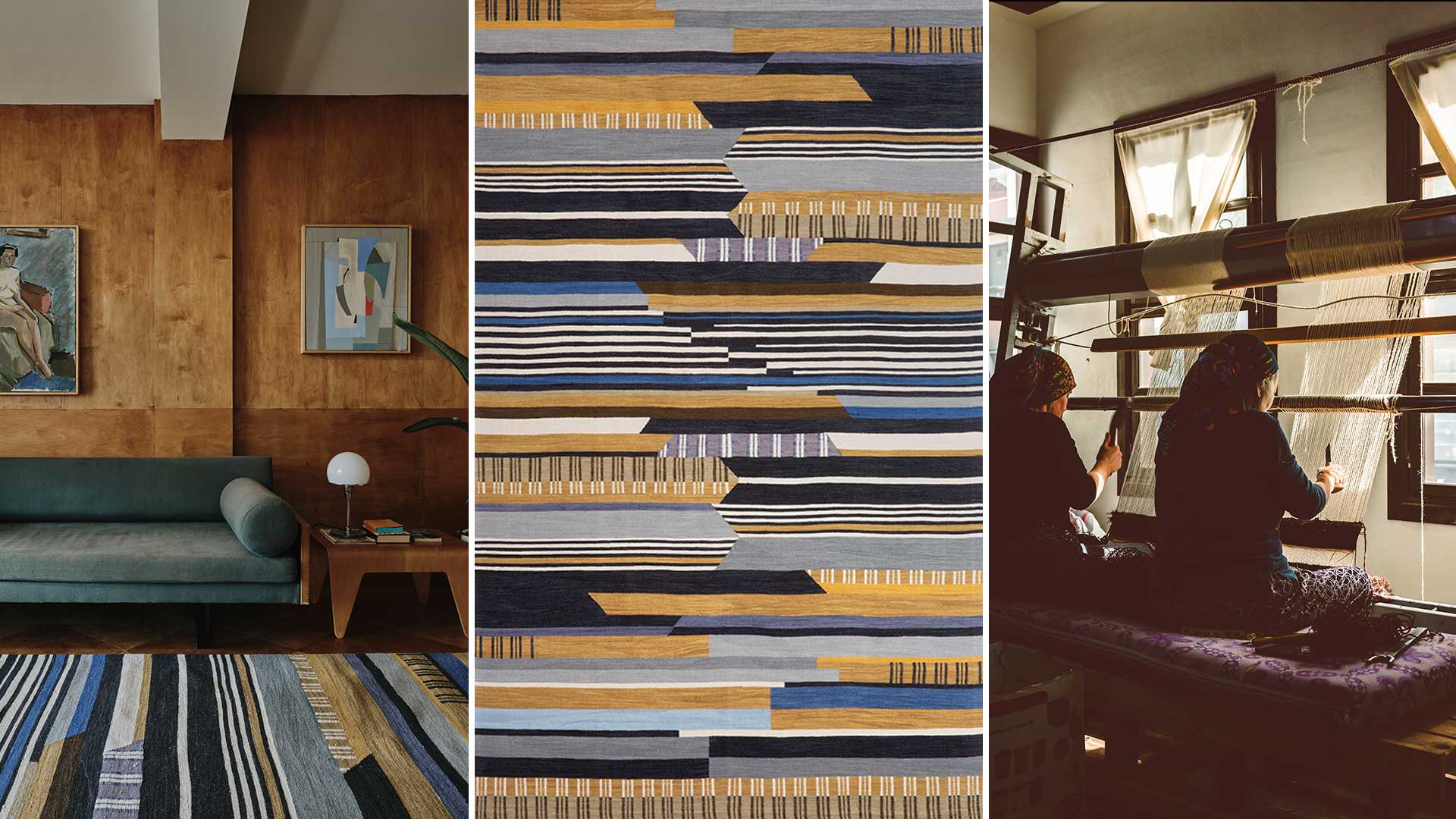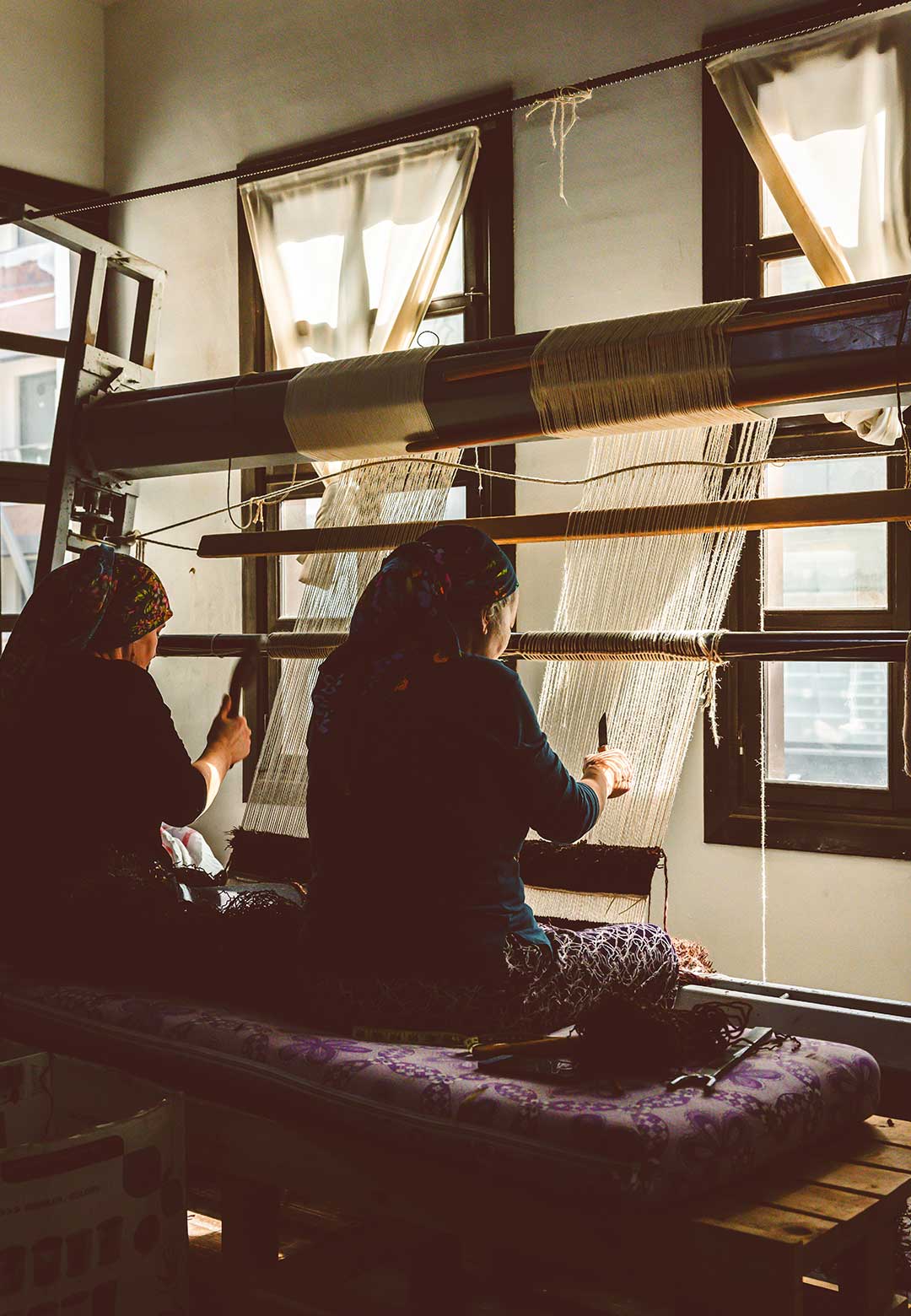London Design Festival 2023 provided a springboard for the new and never-before-seen, alongside a platform for the celebration of time-honoured métiers. Amplifying voices that speak of traditional craftsmanship is ever relevant, since it brings to the forefront, rustic practices that unravel far away from the contemporary spotlight. During the recently concluded, 21st iteration of the London Design Festival, Matthew Bourne, co-founder of Christopher Farr, paid tribute to the works of Kirkit workshop, the brand’s producers in Turkey. The showcase titled Women Behind The Weave: Bauhaus to Bosphorus staged an essential message at the design event in London, UK, showing the creative industry the way forward, by improving weaver welfare, protecting their cultural heritage and future-proofing the Turkish rug industry. “One cannot imagine a world where the French would let their wine industry disappear. Weaving is of equal cultural importance to Turkey and the other countries of Asia Minor,” states Bourne.
Marking the launch of a new rug design by Bauhaus master Gunta Stölzl, Christopher Farr joined forces with the Turkish weaving workshop, Kirkit. Together, they collaborated on a creative weaving project that celebrated freedom of expression. Kirkit, an Istanbul-based company that produces flatweaves of the highest quality, strives to raise the bar for weaver welfare, setting a new industry standard and preserving Turkish weaving. Women Behind The Weave presented fifteen pieces of woven artwork, made by individual weavers of the Kirkit workshop, where each weaver was invited to produce flatweaves from their own imagination rather than from a given carpet design.
By employing surplus yarn from the workshop, the Turkish artists created their own artwork, with the only set parameters of filling one square metre. Along with these experimental pieces, a new design by Bauhaus master Gunta Stölzl, woven by Kirkit weavers, was also displayed. “We are delighted to have produced these weavings by the women of the Kirkit workshop and have done so as a tribute to the peerless kilim weaving tradition in Anatolia that has endured for millennia. It is essential that this tradition continues and the best way to ensure this is by raising the status of the craft and of the women who produce it,” believes Bourne.
Weaving is traditionally carried out by women in rural areas within their homes. It is paid on piece work, without the promise of a stable future income or added employee benefits—leaving the women weavers vulnerable to exploitation and little to no job security. Consequently, weavers in Turkey are in sharp decline as they switch careers. Ahmet Diler, founder and director of Kirkit, aspires to break this cycle. From a young age, he witnessed the exertion of his mother and grandmother who were both village weavers; he experienced the merchants negotiating down the weavers' fees to the bare minimum. “If we want this art to continue, we, the industry, need to change,” Diler comments.
Kirkit employs twenty-three weavers on regular hours—including a lunch break with home-cooked food—along with being provided with retirement funds and access to health care. Diler has also employed an expert team that includes a master fourth-generation dyer and a production manager with a thorough understanding of weaving and materials.
Despite the Bauhaus school welcoming everyone regardless of age and sex, women were expected to pursue subjects deemed suitably 'feminine,' such as fine art, ceramics and weaving, and were actively discouraged from entering the ‘masculine departments’ such as architecture. After enrolling as a student in 1925, Stölzl became the first female master within the school. Stölzl transformed the Weaving Workshop from a slighted facility into one of its most successful departments. During her tenure, she shifted the focus from pictorial work towards more industrial designs, introducing radical ideas from the world of modern art to weaving, while initiating experiments in materials and methods that transported weaving into the modern age. Christopher Farr presented the new Gunta Stölzl kilim, ’1923,' which is produced to order in an edition of ten, as part of their ongoing collaboration with the estate.
“Making kilims has been an ancient artform since the Neolithic era. It has always been about freedom of expression, and this is the Anatolian mentality. It always produces something beautiful, something irregular. It is deep-rooted, and just like Anatolian music, it comes from the same mind—it could be compared to the freestyle nature of jazz music. From its spirit comes its beauty,” Diler explains.
Anatolian kilims are intrinsic to the country’s culture, and Turkey is the world’s centre for the finest flat weaves. Kirkit has been a long-time partner for Christopher Farr, producing custom designs including many of Gunta Stölzl’s designs. Women Behind The Weave: Bauhaus to Bosphorus provided an opportunity to celebrate these two diverse groups of women—those from the Turkish weaving communities, and those of the Bauhaus weaving department—which had been unjustly disregarded on the basis of their sex.
At the design festival part of the Shoreditch Design Triangle during LDF 2023, Christopher Farr staged their partnership with Kirkit for this design installation, providing them a global platform to champion their business approach, the first of its kind. Together, they reiterated a shared goal to give the women weavers the respect they deserve, and to ensure that aeons of knowledge of traditional carpet making and rich cultural heritage only blossom into the future. The woven artworks produced for the design exhibition will be on display at Christopher Farr’s East London studio before travelling to Berlin for an exhibition in October this year. The artworks will then be made available for sale, with profits going to a local charity of Kirkit’s choice. Dedicated to working with fair trade organisations, Christopher Farr also has a strong relationship with Label Step, which carries out regular audits of their supply chain to abide by and exceed fair standards at every stage in the production process. Through every rug, they believe in uplifting and providing visibility to the lives of the people who craft it.
‘Women Behind The Weave: Bauhaus to Bosphorus’ was on display from September 18 - 23, 2023, at Christopher Farr’s studio at 18 Calvin Street, London, E1 6HF, UK.
London Design Festival is back! In its 21st edition, the faceted fair adorns London with installations, exhibitions, and talks from major design districts including Shoreditch Design Triangle, Greenwich Peninsula, Brompton, Design London, Clerkenwell Design Trail, Mayfair, Bankside, King's Cross, and more. Click here to explore STIR’s highlights from the London Design Festival 2023.






 Sign in with email
Sign in with email










What do you think?